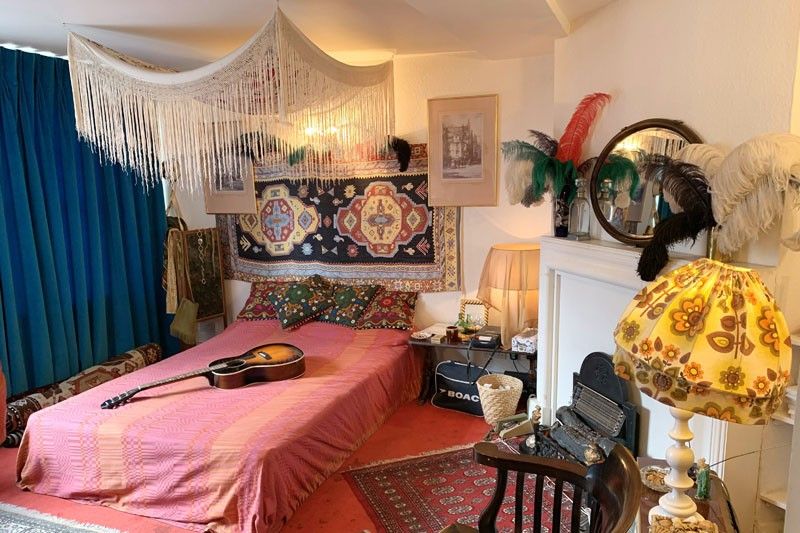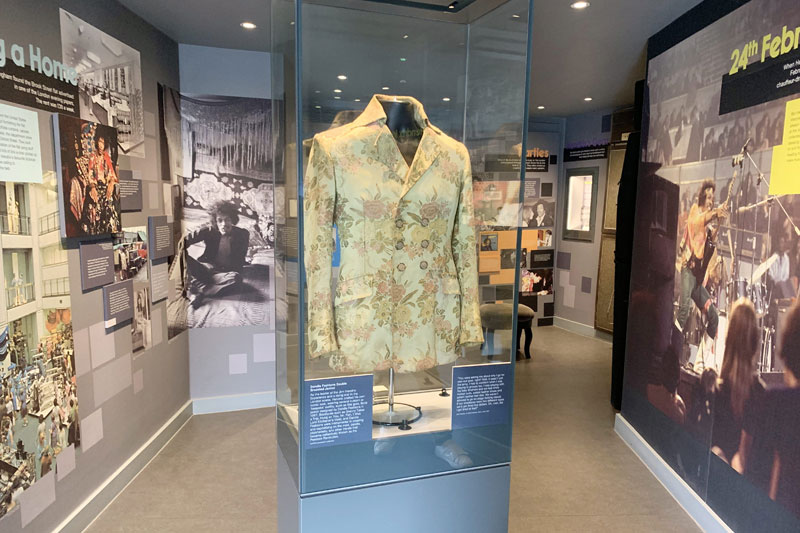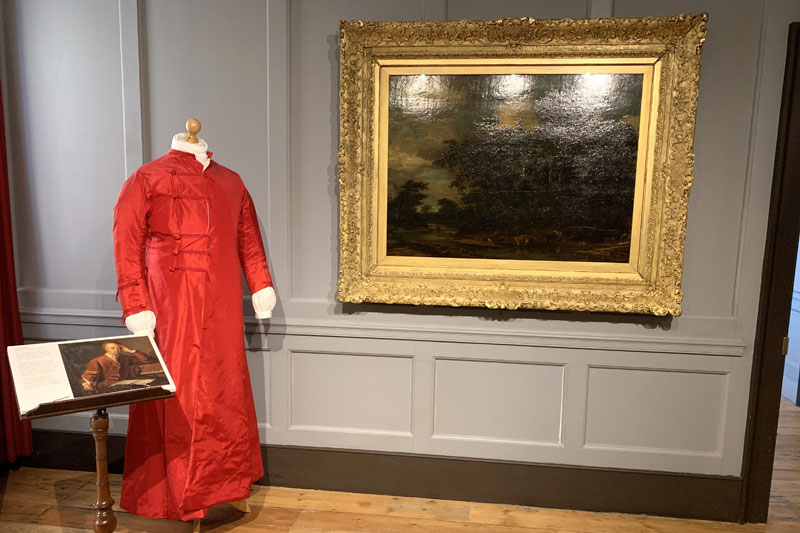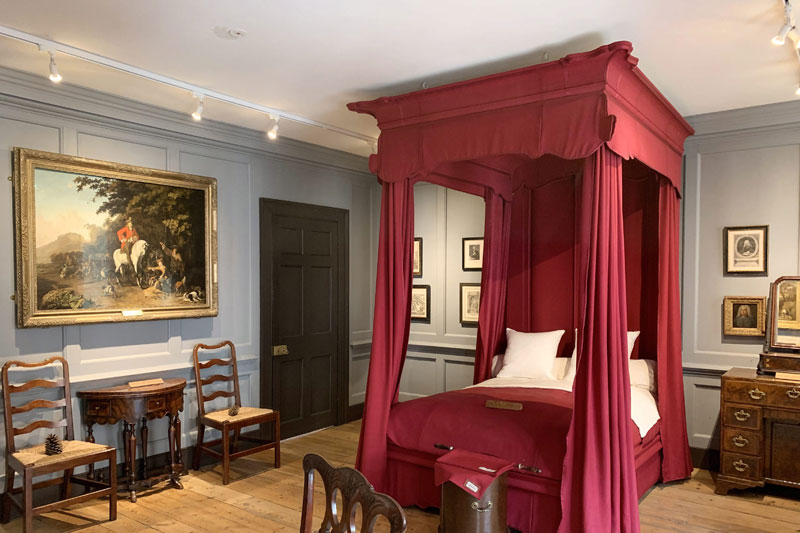Handel and Hendrix are in the house

From No. 25 Brooke St. one could hear the heavenly voices singing verses from the Christmas oratorio Messiah by George Frideric Handel. Next door, however, it’s another kind of high with the psychedelic strains of Purple Haze by Jimi Hendrix on guitar while glasses clink away toasting the start of the holidays.
Who would think that Handel, the German Baroque composer of opera and choral works, and Hendrix, the American rock musician of the 1960s, would be sharing the same roof in Mayfair, the tony London district of elegant Georgian townhouses, exclusive hotels, gourmet restaurants and designer boutiques. Around 200 years apart, of course.

Handel was a resident from 1723 until his death in 1759; Hendrix was there from July 1968 to March 1969. The two units are now joined together, seemingly disparate yet echoing the previous occupants’ shared fascination with London and a common gift for bringing sweeping changes to the world of music.

Handel was the very first occupant of the house, which formed part of a four-building residential development by the speculative builder George Barnes. He was just appointed court composer at the Chapel Royal at St. James Palace, which was nearby. Also accessible were the music and artistic communities centered around Soho and Covent Garden, as well as the King’s Theatre in the Haymarket where his Italian opera career was focused at the time.

Staying in the same house and in one city for almost 40 years was quite unusual since opera composers rarely stayed put in one location for extended periods. It also helped that he was accepted in the upper echelons of society where he circulated freely and had the right address with neighbors like Member of Parliament John Monckton who became the first Viscount Galway.
Like the typical Georgian townhouse, there were four floors with the basement containing the kitchen and the attic or garret for the servants. Georgian interior design was known for its elegance and lightness of touch favoring the uncluttered neo-classical style based on the symmetry of Roman and Greek architecture with pale tones for walls and soft furnishings and accessories. The larger front first room, used for rehearsals, now has reproductions of a period harpsichord of the Flemish firm Ruckers and a period chamber organ. His music can still be heard here thanks to Baroque concerts held regularly.

From the 1730s onwards, there were many accounts of the rehearsals of operas and oratorios from friends and fellow musicians. Listening to the soprano Anna Maria Strada singing arias from Alcina, Mrs. Pendarves (formerly known as Mary Granville and later as Mrs. Delany), a close friend and supporter of the composer, recalled that “Whilst Mr. Handel was playing his part, I could not help thinking him a necromancer in the midst of his enchantments.”

The adjoining room is Handel’s main composing room containing a clavichord, an instrument he would play as a child up in the garret in defiance of his father; and portraits of Handel and his friend Charles Jennens, the librettist of Messiah. The portrait of the composer by Thomas Hudson — framed with ornate bulrushes, a symbol associated with Moses who in the Bible was found abandoned on the riverbank among bulrushes — is a tribute to Handel’s involvement with the Foundling Hospital for abandoned children as a governor and a patron of crucial benefit concerts. Other paintings around the house include landscapes, pastoral scenes and conversational pieces (groups of people talking and partaking in activities together), similar to those in the composer’s original collection of around 80 significant works by artists such as Locatelli and Watteau.
The second floor contains the bedroom at the front with a dressing room at the back. The centerpiece is an English 1720s four tester bed in pine, upholstered in crimson harateen. On display is a banyan, an 18th-century gentleman’s dressing gown used informally at home to entertain acquaintances, similar to the one Handel is wearing in a portrait by Philip Mercier.

eanwhile, next door, a brocade suit of ‘60s rock legend Jimi Hendrix is on display together with other memorabilia like his record collection, which includes Handel’s Messiah that he bought when he discovered the identity of his illustrious neighbor.
Born Johnny Allen Hendrix and later renamed James Marshall by his father, he was known for his phenomenal electrical guitar playing skills and innovative, experimental sound. He formed his own group in 1965 called Jimi James and the Blue Flames playing around New York City’s Greenwich neighborhood but it was his trip to London in 1966 when Chas Chandler of the British rock group The Animals became his manager that a seismic shift in his life and the history of rock and roll would take place.

Teaming up with bassist Noel Redding and drummer Mitch Mitchell, the Jimi Hendrix Experience was born, building up a considerable following among rock royalty like The Beatles, The Rolling Stones, The Who and Eric Clapton. Their first two singles, Purple Haze and Hey Joe were hits and the succeeding album “Are You Experienced” spent 33 weeks on the UK charts. Returning to the U.S. as a European star, he sealed his transatlantic fame when he set his guitar on fire while performing at the 1967 Monterey Pop Festival, creating one of the most iconic moments in rock n’ roll history.
By 1968 he moved into the Brooke Street flat, which his girlfriend Kathy Etchingham found through a newspaper ad, spending some time decorating it with finds from Portobello road and furnishings from the John Lewis department store. “Jimi enjoyed choosing the colors and textures — very unusual ones at the time — discussing them with the sales staff,” according to Kathy.
With a Bohemian feel, Persian rugs are strewn about the floor below a bed with an orange and pink striped bedspread. His favorite Victorian silk shawl was pinned to the ceiling as a canopy. A captain’s chair in dark wood with cabriole legs, available for selfies, is a repro of the one used in Jimi’s 1969 photo shoot. Detailed décor include a kilim rug used as headboard, an original oval mirror, a shell encrusted box and multicolored ostrich feathers on vases. A guitar is on the bed as he always had it within reach in case a tune came to mind.
“It’s my first real home of my own,” Hendrix told Kathy then.
Hippie chic as the flat was, he was very tidy. “He always made the bed and didn’t have a situation where all the socks were all over or anything like that,” according to Kathy. In the evenings, musicians and performers would descend upon their flat to watch Hendrix play. The more confident ones like the jazz musician Rahsaan Roland Kirk would jam with the rock sensation. Some guests like George Harrison of The Beatles would stay the night, sleeping in the upstairs room. “But there were no wild parties,” Kathy insists. “The only drug in the house was marijuana.”
Later, however, when Jimi started taking heavier drugs, the couple split up. “Somewhere along the line, I realized that this is not going to be anything that I’d want long term,” she said.
The following year, in September 1970, Jimi died from an overdose of barbiturates. He was only 27, with a thriving career that lasted only four years.
His neighbor had a much longer life span, dying at home in 1759 at age 74 with a career spanning six decades. Well, Handel’s indulgences were a little more conventional than Hendrix’s. He was happy with just a bottle of Claret or a pot of hot chocolate.
* * *
For Handel & Hendrix in London details log on to www.handelhendrix.org. Follow the authors on Instagram @rickytchitov; Twitter @RickyToledo23; Facebook — Ricky Toledo Chito Vijandre



















